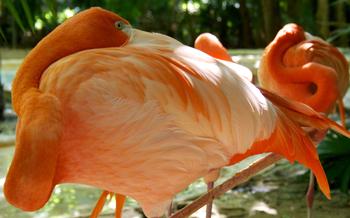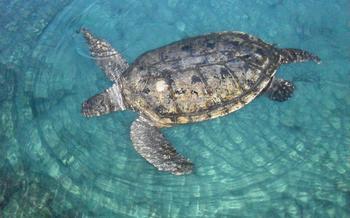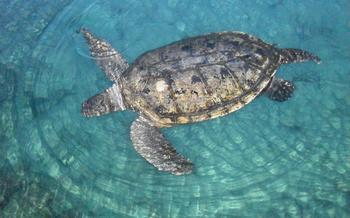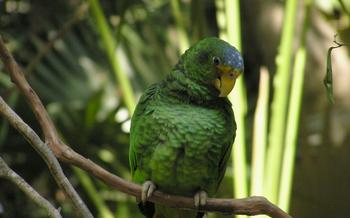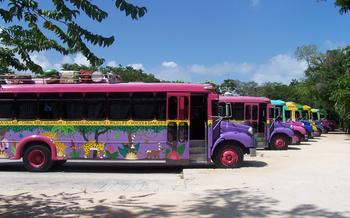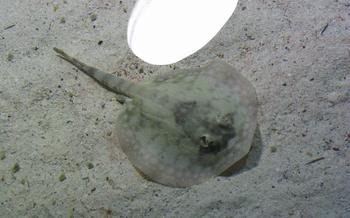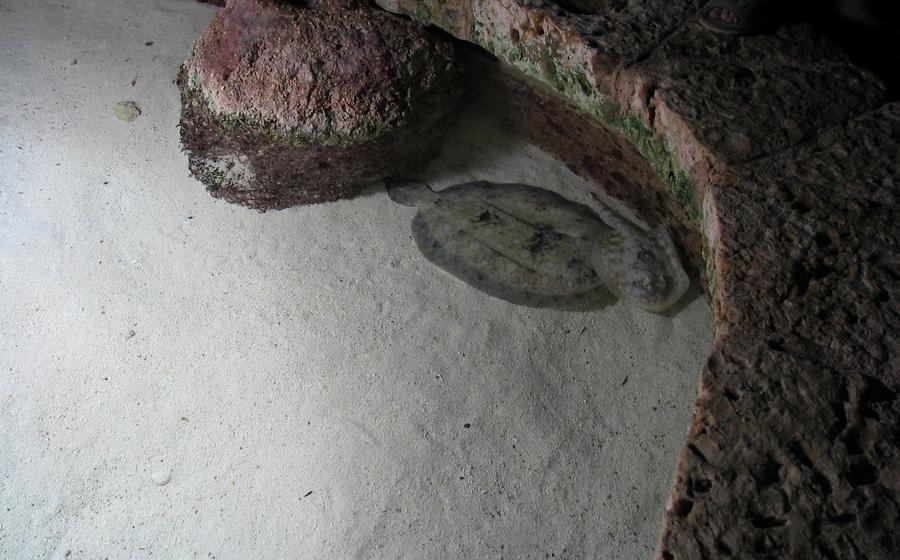
The Jungle Place Spider Monkey Sanctuary
- Xcaret - The Jungle Place Spider Monkey Sanctuary: A Haven for Primates
- Encounters with Spider Monkeys: An Up-Close Experience
- The Jungle Trek: A Journey Through the Rainforest
- Spider Monkey Island: A Unique Habitat
- Educational Programs: Learning About Spider Monkeys
- Photography Opportunities: Capturing the Beauty of Spider Monkeys
- Volunteering Opportunities: Contributing to Conservation
- Research and Conservation Initiatives: Protecting Spider Monkeys
- Sustainability Efforts: Protecting the Environment
- Cultural Experiences: Exploring Mexican Heritage
- Accessibility: Ensuring Inclusivity for All Visitors
- Family-Friendly Activities: Engaging Kids in Conservation
- Dining Options: Savoring Local Cuisine
- Transportation: Getting to Xcaret
- Insider Tip: Making the Most of Your Visit
Xcaret - The Jungle Place Spider Monkey Sanctuary: A Haven for Primates
Xcaret's Spider Monkey Sanctuary: A Haven for Primates
Xcaret, an eco-archaeological park located on the Riviera Maya in Mexico, is home to a unique sanctuary dedicated to the conservation and rehabilitation of spider monkeys. Established in 1990, the Spider Monkey Sanctuary at Xcaret serves as a haven for these endangered primates, providing a safe and natural environment for them to thrive. The sanctuary's mission is to protect and preserve spider monkeys, raise awareness about their conservation status, and contribute to scientific research and education efforts.
The sanctuary houses various species of spider monkeys, including the black-handed spider monkey, brown spider monkey, white-bellied spider monkey, and Geoffroy's spider monkey. These monkeys are rescued from illegal trafficking, hunting, and habitat destruction, and are brought to the sanctuary to receive specialized care and rehabilitation. The sanctuary's team of experienced veterinarians and biologists work tirelessly to ensure the well-being of the monkeys, providing them with proper nutrition, medical care, and a stimulating environment that mimics their natural habitat.
Xcaret's Spider Monkey Sanctuary is not only a refuge for these primates but also a center for conservation efforts and research initiatives. The sanctuary collaborates with various organizations and institutions to conduct research on spider monkey behavior, ecology, and genetics. This research plays a crucial role in understanding the species' biology, threats they face, and developing effective conservation strategies. By actively participating in research and conservation initiatives, Xcaret contributes to the global efforts to protect and preserve spider monkeys in the wild.
Encounters with Spider Monkeys: An Up-Close Experience
Xcaret offers a unique opportunity to witness spider monkeys in their natural habitat. Visitors can observe these primates swinging through the trees, foraging for food, and interacting with each other. Interactive experiences, such as feeding the monkeys, allow visitors to get up close and personal with these fascinating creatures. However, it is essential to follow the safety guidelines and engage responsibly to ensure the well-being of both the monkeys and visitors. Respecting the animals' space and avoiding sudden movements or loud noises helps create a safe and enjoyable environment for all.
The Jungle Trek: A Journey Through the Rainforest
As you embark on the Jungle Trek, a mesmerizing journey through the heart of the rainforest awaits. The trail winds its way through a tapestry of lush vegetation, where towering trees form a verdant canopy overhead, and vibrant flowers bloom in a symphony of colors. Along the path, you'll encounter a diverse array of wildlife, including exotic birds with their enchanting melodies, slithering reptiles, and a myriad of insects that play a vital role in the rainforest ecosystem. Each step you take leads you deeper into this awe-inspiring realm, where the intricate web of life unfolds before your eyes, revealing the delicate balance and fragility of this precious ecosystem. Take your time to pause and observe, for each encounter with nature holds a wealth of knowledge and wonder.
Spider Monkey Island: A Unique Habitat
Spider Monkey Island at Xcaret is a specially designed habitat for the park's spider monkeys. The island is home to a variety of trees and plants that provide the monkeys with food and shelter. It also features climbing structures and ropes that allow the monkeys to move around and play.
The island's design takes into account the social dynamics of spider monkeys. The monkeys are naturally social animals that live in groups called troops. The island provides ample space for the monkeys to form troops and interact with each other.
Spider Monkey Island is a great place to observe the monkeys' natural behaviors. Visitors can watch the monkeys swing through the trees, play with each other, and feed on fruits and leaves. The island also provides a unique opportunity to learn about the role that spider monkeys play in the rainforest ecosystem.
Spider monkeys are important seed dispersers. They eat a variety of fruits and seeds, and they often drop these seeds in different parts of the rainforest. This helps to spread plants and trees throughout the forest, which contributes to the overall health and biodiversity of the ecosystem.
Educational Programs: Learning About Spider Monkeys
The Spider Monkey Sanctuary at Xcaret offers a range of educational programs designed to engage visitors of all ages in the fascinating world of spider monkeys. Guided tours, led by knowledgeable naturalists, provide an immersive experience, allowing visitors to learn about the biology, behavior, and conservation status of these captivating primates. Interactive exhibits and displays further enhance the learning experience, showcasing intriguing facts and insights into the lives of spider monkeys.
The sanctuary's commitment to education extends beyond its visitors. It actively collaborates with schools and institutions to develop educational materials and programs that promote awareness and appreciation for spider monkeys and their rainforest habitat. These initiatives aim to inspire the next generation of conservationists and foster a sense of responsibility towards protecting these endangered species.
Photography Opportunities: Capturing the Beauty of Spider Monkeys
The spider monkeys at Xcaret are not only fascinating to observe but also incredibly photogenic. With their agile movements, expressive faces, and playful interactions, they offer ample opportunities for stunning wildlife photography. Here are some tips to help you capture the best shots:
-
Use a Telephoto Lens: A telephoto lens with a focal length of at least 200mm is ideal for capturing close-up shots of the spider monkeys without disturbing them. This allows you to fill the frame with their vibrant fur and inquisitive expressions.
-
Choose the Right Lighting: The best time to photograph spider monkeys is during the golden hours, around sunrise and sunset, when the light is warm and diffused. This creates a beautiful, soft glow that enhances the colors and textures of their fur.
-
Avoid Flash Photography: Using flash photography can startle the monkeys and disrupt their natural behavior. Instead, rely on natural light or use a low-power external flash with a diffuser to minimize disturbance.
-
Be Patient and Observant: Patience is key when photographing wildlife. Take your time, observe the spider monkeys' behavior, and wait for them to engage in interesting activities or interactions before clicking the shutter.
-
Share Your Photos: Once you've captured some amazing shots, consider sharing them on social media or online forums to raise awareness about spider monkey conservation and inspire others to visit Xcaret and support their efforts.
Volunteering Opportunities: Contributing to Conservation
The Spider Monkey Sanctuary at Xcaret offers unique volunteering opportunities for those passionate about wildlife conservation and animal welfare. By becoming a volunteer, you can actively contribute to the sanctuary's mission of protecting spider monkeys and their habitats.
There are various ways to get involved as a volunteer. You can work directly with the spider monkeys, assisting in their care and feeding. You can also participate in conservation research projects, helping to collect data on spider monkey behavior and ecology. Other volunteer opportunities include working in the education department, leading guided tours for visitors, or assisting with fundraising and outreach initiatives.
Volunteering at the Spider Monkey Sanctuary is a rewarding experience that allows you to make a tangible difference in the lives of these fascinating primates. By joining the team, you'll gain valuable hands-on experience in wildlife conservation, learn about spider monkey biology and behavior, and contribute to the ongoing efforts to protect this endangered species.
Research and Conservation Initiatives: Protecting Spider Monkeys
Xcaret is not just a sanctuary for spider monkeys; it is also a hub for research and conservation initiatives dedicated to protecting these fascinating primates and their habitats. Scientists and researchers from around the world collaborate with Xcaret to conduct in-depth studies on spider monkey behavior, ecology, and genetics. These research projects provide valuable insights into the lives of spider monkeys, helping experts develop effective conservation strategies.
The sanctuary also collaborates with other organizations and institutions to support conservation efforts on a broader scale. Through partnerships with government agencies, universities, and NGOs, Xcaret contributes to regional and international conservation initiatives aimed at protecting spider monkey populations and their habitats. This collaborative approach ensures that conservation efforts are coordinated and effective, maximizing their impact on the preservation of spider monkeys and their unique ecosystem.
The research and conservation initiatives undertaken at Xcaret are essential for shaping evidence-based conservation strategies. By understanding the biology, behavior, and ecological needs of spider monkeys, researchers can identify key threats and develop targeted interventions to address them. This comprehensive approach to conservation helps ensure the long-term survival of spider monkeys in the face of habitat loss, poaching, and other challenges.
Sustainability Efforts: Protecting the Environment
Xcaret is committed to sustainable practices and actively works to minimize its environmental impact. The park employs several measures to conserve natural resources, including waste reduction, energy efficiency, and water conservation. Waste reduction initiatives include recycling and composting programs, while energy-efficient lighting and appliances are used throughout the park. Additionally, water conservation measures, such as drip irrigation systems and rainwater harvesting, are implemented to reduce water consumption. By embracing sustainability, Xcaret sets an example for other tourism destinations and demonstrates its commitment to protecting the environment while offering visitors an unforgettable experience.
Cultural Experiences: Exploring Mexican Heritage
Xcaret provides visitors with a unique opportunity to explore the rich cultural heritage of Mexico. Immerse yourself in the vibrant traditions of the Mayan civilization, which has a profound connection to the region. Witness captivating traditional performances that showcase the beauty of Mexican dance, music, and storytelling. Learn about the history and significance of these cultural expressions, and gain a deeper appreciation for the diverse cultural tapestry that makes Mexico so special.
Combine your wildlife conservation adventure with a journey into Mexican culture. Discover the ancient Mayan ruins scattered throughout the park, remnants of a civilization that once thrived in this very landscape. Engage with local artisans who demonstrate traditional crafts, showcasing the skills and creativity of the region's people. By embracing the cultural experiences offered at Xcaret, you not only support local communities but also gain a richer understanding of Mexico's diverse cultural heritage.
Accessibility: Ensuring Inclusivity for All Visitors
At Xcaret, accessibility is a top priority, ensuring that all visitors, regardless of their abilities, can enjoy the wonders of the Spider Monkey Sanctuary. Wheelchair-accessible trails, ramps, and viewing areas make it possible for visitors with disabilities to navigate the sanctuary with ease. The staff is also trained to provide assistance and ensure that everyone has a safe and enjoyable experience.
Accessible restrooms and designated parking spaces are available throughout the park, ensuring convenience for visitors with mobility challenges. By creating an inclusive environment, Xcaret allows everyone to connect with nature and experience the beauty of spider monkeys up close.
Family-Friendly Activities: Engaging Kids in Conservation
Xcaret offers a range of interactive activities and educational programs designed to engage children in spider monkey conservation. Through hands-on experiences and age-appropriate learning materials, kids can discover the fascinating world of these primates and their importance in the rainforest ecosystem.
The park's dedicated team of educators leads interactive workshops and guided tours tailored to different age groups. These sessions provide children with an opportunity to learn about spider monkey biology, behavior, and the threats they face in the wild. Through storytelling, games, and interactive exhibits, kids can develop a deep appreciation for these amazing creatures and the need to protect them.
In addition to educational programs, Xcaret also offers a variety of family-friendly activities that allow kids to interact with spider monkeys in a fun and engaging way. Children can participate in feeding sessions, where they can safely offer treats to the monkeys under the supervision of experienced staff. Observing the monkeys' playful interactions and curious nature is a delightful experience that creates lasting memories for kids and families alike.
Dining Options: Savoring Local Cuisine
Xcaret offers a diverse range of dining options to cater to every palate. Whether you seek traditional Mexican dishes or international cuisine, you'll find something to satisfy your taste buds while surrounded by nature's beauty. Indulge in the flavors of Mexico with authentic dishes like tacos, enchiladas, and pozole, prepared with fresh, local ingredients. International options include Italian, Asian, and American cuisine, ensuring that there's something for everyone to enjoy. Savor your meal in the picturesque surroundings of the park, with the lush greenery and tropical birds creating a serene ambiance. Remember to try the delicious fresh fruit juices and traditional Mexican beverages like horchata and tamarindo to complete your culinary experience.
Transportation: Getting to Xcaret
Xcaret is conveniently located just a short distance from the popular tourist destination of Cancun. To reach the park, you can either drive or take public transportation. If you choose to drive, simply follow the signs from Cancun to Xcaret, which is located on the Riviera Maya. There is ample parking available at the park. If you prefer to take public transportation, there are several buses that run from Cancun to Xcaret. You can catch these buses from the main bus station in Cancun. Once you arrive at Xcaret, you can purchase your tickets and enter the park.
Insider Tip: Making the Most of Your Visit
To make the most of your visit to the Xcaret Spider Monkey Sanctuary, plan your trip during the dry season, which runs from November to May, when the weather is ideal for observing the monkeys in their natural habitat. Don't forget to pack comfortable shoes for walking on the trails and insect repellent to keep those pesky mosquitoes at bay. Take advantage of the guided tours offered by the sanctuary to gain insights into the fascinating world of spider monkeys and their conservation status. These tours are led by experienced naturalists who can provide valuable information and help you make the most of your experience.




